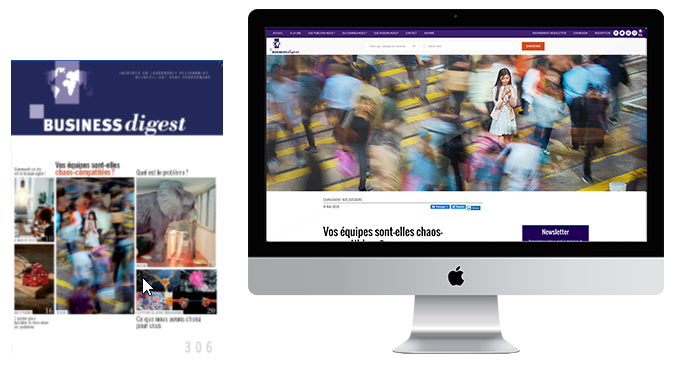Making the best decisions in complex situations
Problem solving is a tricky task – even for seasoned decision-makers – but it’s a vital exercise, which calls for a well thought-out, structured and made-tomeasure approach, with a step-by-step process, from identifying the problem to selling the solution. And yes, your complex problem-solving is still a vital leadership competency: you won’t be able to delegate the task to AI anytime soon.
Combining rigor, method, and creativity to resolve complex issues is a highly sought-after ability. It is not something that comes naturally: it takes discipline and insight. But, in many companies today, due to lack of time and resources and pressures, important decisions are often made in a hurry, with decision-makers relying more on instinct than actual reflection.
In such cases, your cognitive biases may push you to overlook conflicting evidence or make any number of errors. On the other hand, taking the time to analyze problems carefully can also lead to paralysis, which is just as damaging as doing things too quickly. Unfortunately, “turnkey” solutions from external experts are not a panacea: they are often just too formatted. Instead, the authors of Cracked It! advocate a method known as 4S, drawing on research into cognitive psychology and the latest advances in design thinking. This strategy will help you switch from an intuitive, informal and / or mechanical problem-solving approach to a more structured, logical and personalized system, so you can arrive at better informed decisions. Of course, it isn’t magic. It is still up to you to challenge your own biases and habits – and to keep your good resolution to be more disciplined!
Be aware of the pitfalls (and stay grounded)
Do you prefer to “sniff out” the right solution, trusting your own intuition and experience? Be careful: even the most clear-sighted among us are routinely led astray when dealing with complex situations. We’re all at the mercy of the same cognitive biases, which pave the way for irrational decisions. Cracked It! lists the most common pitfalls:
1- Flawed problem definition: getting things plain wrong. Music labels lost two thirds of their revenue between 2000 and 2010. How? They were blind to online downloading, which was seen as a form of illegal piracy that needed to be combatted rather than as a disruptive practice that would lead to radical changes in the industry. The real problem wasn’t finding ways to stem the flow of downloads but to come up with ways to leverage them.
2- Confirmation bias: only considering information that supports your preconceived ideas. Back in 2005 Franck Riboud, CEO of Danone, and Muhammad Yunus, founder of Grameen Bank, decided to launch a yogurt together.
Called Shoktidoi, it was designed to fight child malnutrition in Bangladesh. No one queried whether this solution, which was adopted from the outset, was the best option because it combined the DNA of the two companies and was supported by their CEOs. But the drawbacks were obvious from the start: difficulties regarding conservation, cost, positioning and marketing. As a result, Shoktidoi never met its sales targets.
Excerpt from Business Digest N°290, Octobre 2018
© Copyright Business Digest - All rights reserved

